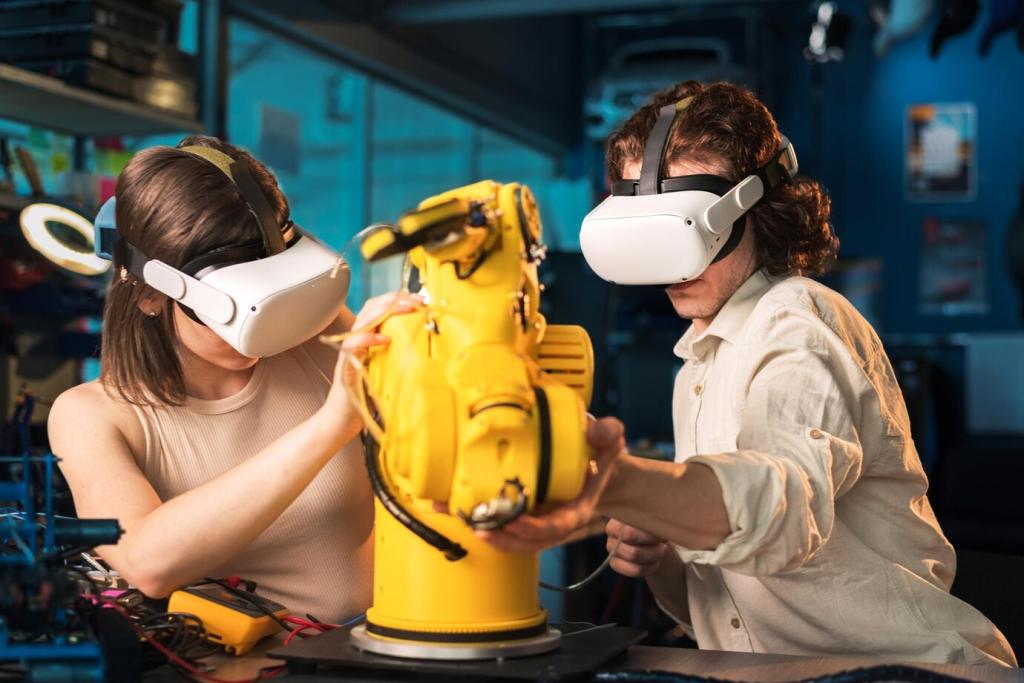
Encouraging Problem-Solving with DIY Robotics
This edition’s chosen theme is Encouraging Problem-Solving with DIY Robotics. Build confidence, curiosity, and grit as we turn simple parts into clever machines and everyday challenges into exciting experiments you will want to share.
Why DIY Robotics Sparks Real Problem-Solving
A robot invites questions that naturally lead to problem-solving. What if the wheel slips? Why does the sensor misread light? Each answer opens another door, and curiosity fuels the next meaningful experiment. Share your biggest what if moment in the comments.
Why DIY Robotics Sparks Real Problem-Solving
Breadboards, taped wires, and imperfect code expose real constraints. Students learn to diagnose issues, prioritize fixes, and validate small wins. This structured tinkering becomes a repeatable process for solving problems beyond robotics, at home or in class.
Why DIY Robotics Sparks Real Problem-Solving
When Alex’s line follower zigzagged wildly, frustration spiked. He graphed sensor readings, adjusted thresholds, and smoothed values with a moving average. The bot straightened, and so did his confidence. Subscribe for weekly mini-challenges that build skills like Alex’s.
A toothbrush head, coin cell, and vibrating motor create a tiny robot that skitters. Change bristle angles, weight placement, or motor orientation and watch behavior shift. Share a photo of your fastest configuration and explain what design tweak made it win.
Getting Started: Simple Builds That Teach Thinking
Two reflectance sensors, two motors, and if-then logic teach control strategies. Students compare threshold versus proportional corrections and document trade-offs. Comment with your best tip for smooth turns without overshooting corners or wobbling down long straight paths.
Getting Started: Simple Builds That Teach Thinking
Design Thinking for Young Roboticists
Who benefits from your robot and why? A desk helper that nudges reminders, or a pet feeder that adapts to routines? Clarify the need and constraints. Post your one-sentence problem statement and get feedback from our community of builders.

Design Thinking for Young Roboticists
Generate multiple concepts without judging. Sketch mechanisms, sensors, and control flows. Label uncertainties to test later. Photograph your sketches and share them; asking for input now prevents costly pivots and accelerates your problem-solving momentum.
Debugging as a Superpower
Make invisible bugs visible
Add serial prints, LED indicators, and temporary tones to expose internal states. Log sensor readings, motor commands, and timing. A visible trail shortens the path from symptom to cause. Comment with your favorite quick visualization trick for tricky sensor noise.
Hypothesis-driven experiments
Change one variable at a time and predict outcomes before testing. Record whether results match expectations and why. This scientific rhythm builds calm, confident problem-solving skills. Subscribe for a template that guides your next controlled experiment.
Celebrate the aha moment
Maya’s servo jittered unpredictably. She suspected power sag, added a capacitor, and rerouted grounds. Jitter vanished, pride skyrocketed. Share your aha story and tag a friend who needs a reminder that persistence beats perfection in DIY robotics.
Creative Challenges That Grow With You
01
One-motor challenge
Build a robot that accomplishes a meaningful task using only one motor and clever mechanisms. Linkages, cams, and gravity suddenly become teammates. Post your design sketch and explain the toughest trade-off you navigated under the constraint.
02
Recyclables rover
Create a chassis from cardboard, bottle caps, or chopsticks. Evaluate rigidity, weight, and assembly speed. Constraints inspire elegant solutions and sharper problem-solving. Share a video of your rover and the recyclable component you are most proud to repurpose.
03
Timed mission, thoughtful metrics
Race to traverse a maze, but measure consistency, not just speed. Track median time, failure modes, and recovery strategies. Comment with your data and what iteration delivered the biggest performance jump in DIY robotics reliability.
Driver and navigator roles
Rotate a driver who builds and a navigator who questions assumptions, reads documentation, and documents tests. This structure reduces tunnel vision and teaches shared ownership. Invite a teammate and post your rotation schedule to stay accountable.
Code reviews with kindness and checklists
Use short reviews focused on clarity, naming, edge cases, and safety. Kind feedback accelerates learning and reduces bugs. Subscribe to receive our lightweight DIY robotics review checklist you can print for your next club session.
Tell the story of your build
Publish a short build log with photos, mistakes, and fixes. Storytelling cements lessons and invites helpful critique. Drop a link to your latest post so our community can celebrate your progress and offer thoughtful suggestions for next steps.

Parents and Teachers: Scaffold the Problem-Solving Journey
Replace answers with prompts. What have you tried? What does the data suggest? What is the smallest test you can run now? Share your favorite coaching question that nudges students toward independent problem-solving in DIY robotics.
Parents and Teachers: Scaffold the Problem-Solving Journey
Set a five-minute rule before stepping in. Encourage learners to sketch hypotheses, search documentation, and try micro-experiments. Comment with a classroom routine that preserves learner ownership while keeping frustration manageable and productive.
